The Premier Conference & Exhibition on Computer Graphics & Interactive Techniques, SIGGRAPH, took place in Vancouver this year. The main theme of the event was AI, with more than half of the technical paper presentations focused on Machine Learning. Production sessions highlighted the automatization of workflows through the integration of generative AI tools. Beyond demonstrations of agentic AI, physical AI with applications in robotics also pointed the way forward – all grounded in 3D data representation, the convention’s traditional and prospective field of expertise at the intersection of science, art, and industry.
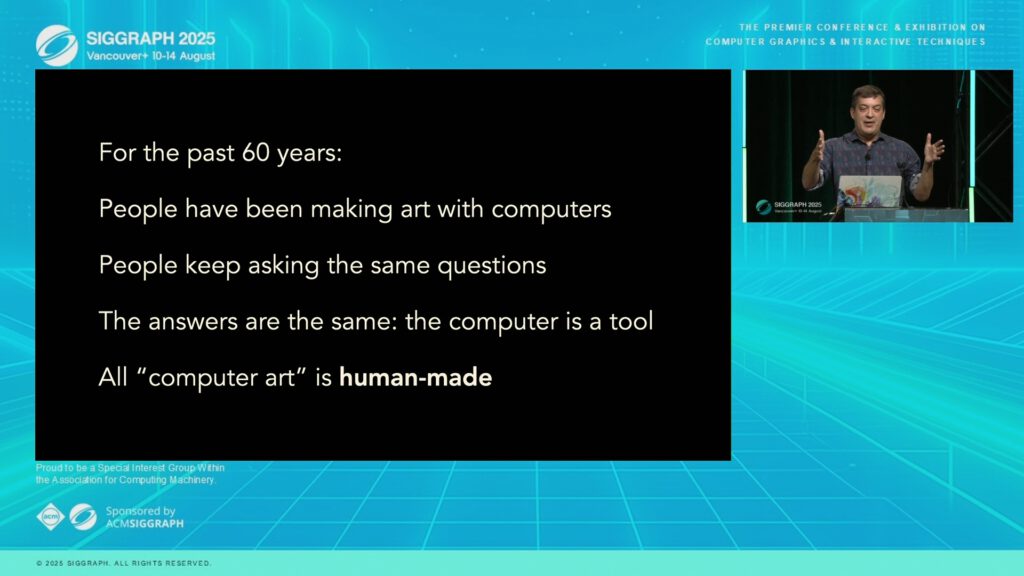
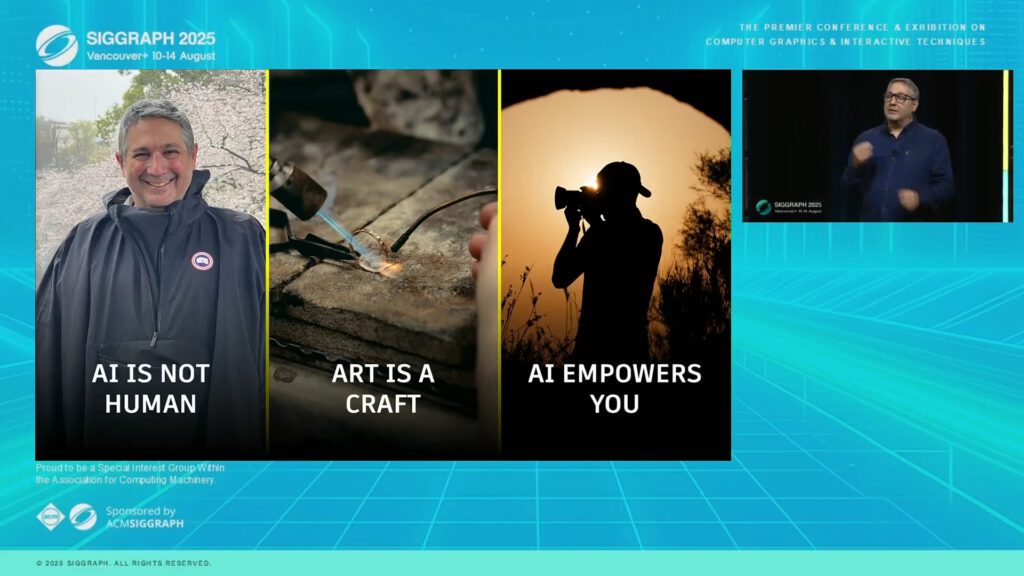
The opening keynote immediately addressed the elephant in the room: the role of human and artistic qualities in the midst of overwhelming technological automation. Reflection on the history of technological media innovations – and their gradual social acceptance in areas such as image generation and audio development – was presented as a blueprint for navigating the present AI revolution. This perspective encouraged a confident realignment of skills and preparation for a future of cooperative efficiency. It also served as a sales pitch for AI-enhanced products and tools as enablers of creative confidence.
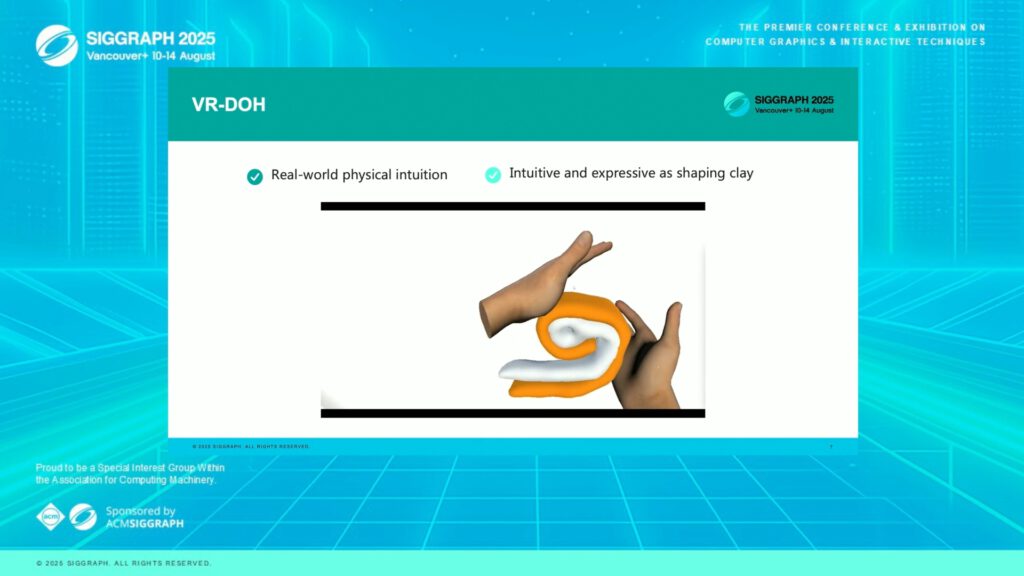
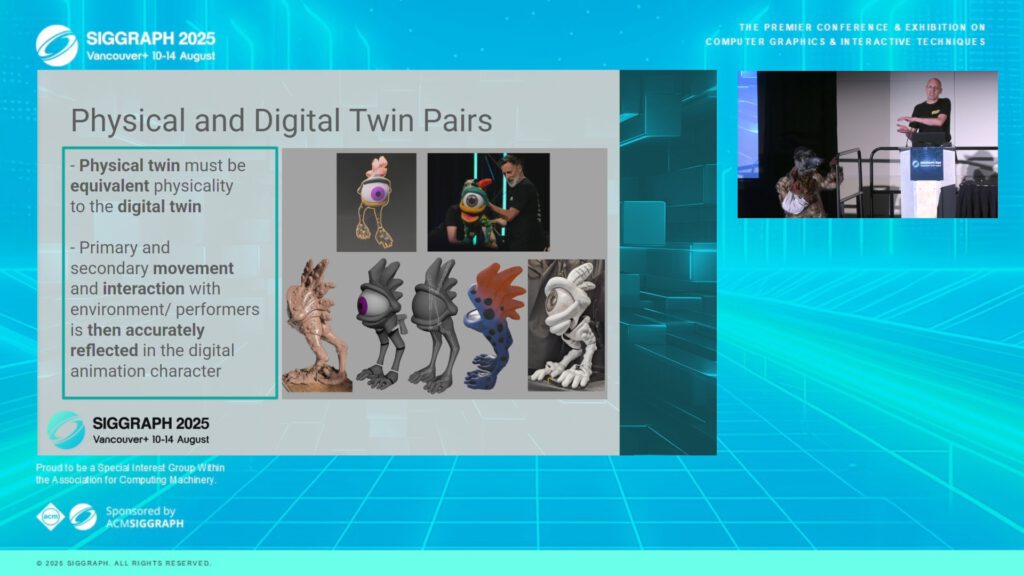
The enhancements enabled by Machine Learning and generative AI were impressive across a wide spectrum. From dynamic motion capture calibration, hand–eye control optimization, object generation, sculpting, rigging, and animation, to material and shader improvements, and even physics, cloth, and fluids: automation processes are becoming more precise, reliable, and efficient. Once isolated single-use applications are now evolving into complex multitask operations. In VR, these tools help predict motion sickness scenarios for greater user comfort, improve hand and body tracking, and facilitate virtual production through digital twins for character animation and set design.
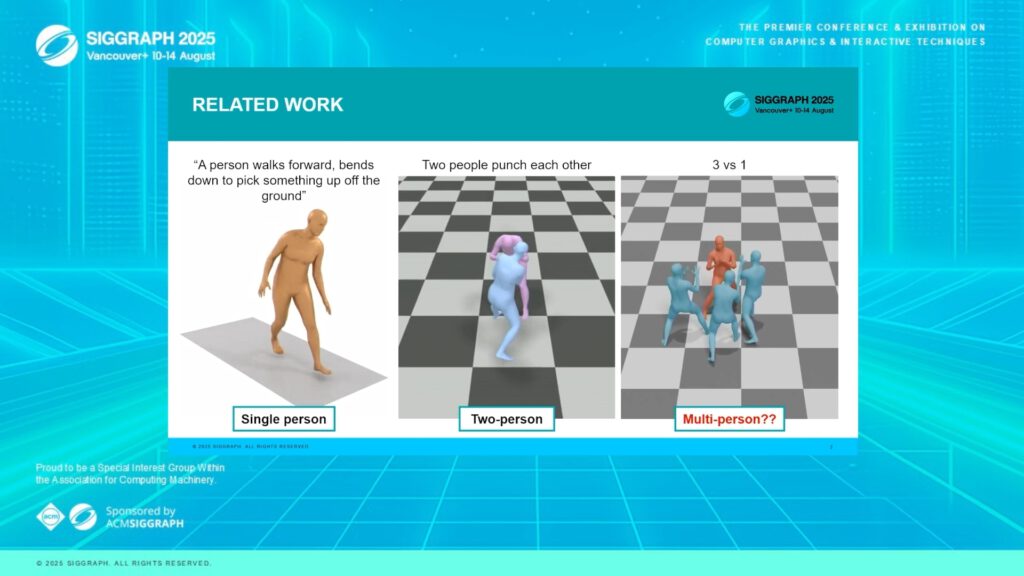
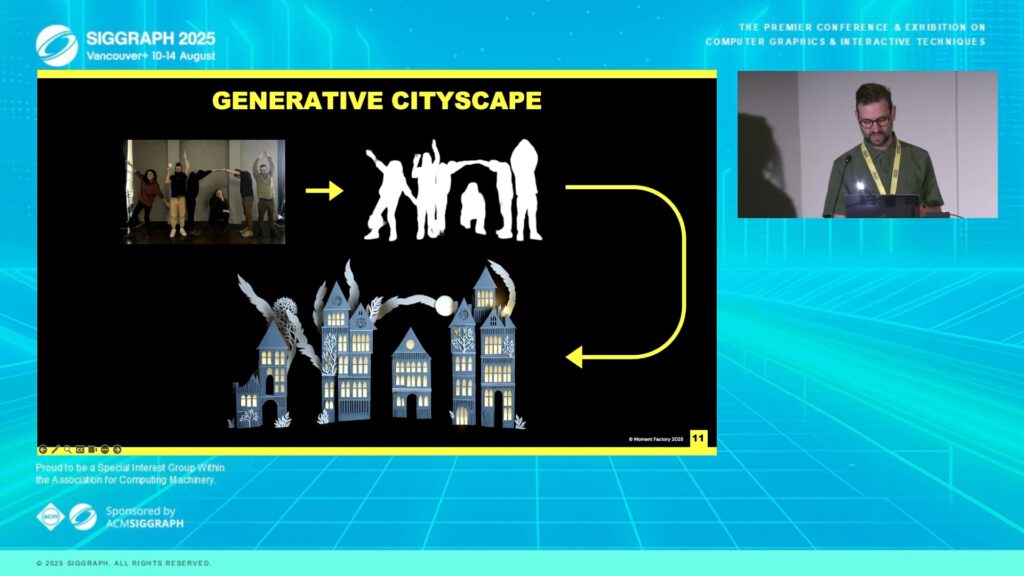
Beyond the technological advancements, the art-related sections of the convention showcased strategies for immersion and audience participation, such as applying prompt design in theater performances and personalizing large-scale projection events. Real-time digital puppetry reconnected digital character animation with handmade originality and individual style while reducing production time. A full track of education panels addressed the challenges of sustaining human competence in an era of automated media production – in which the demand for human expertise continues to rise.
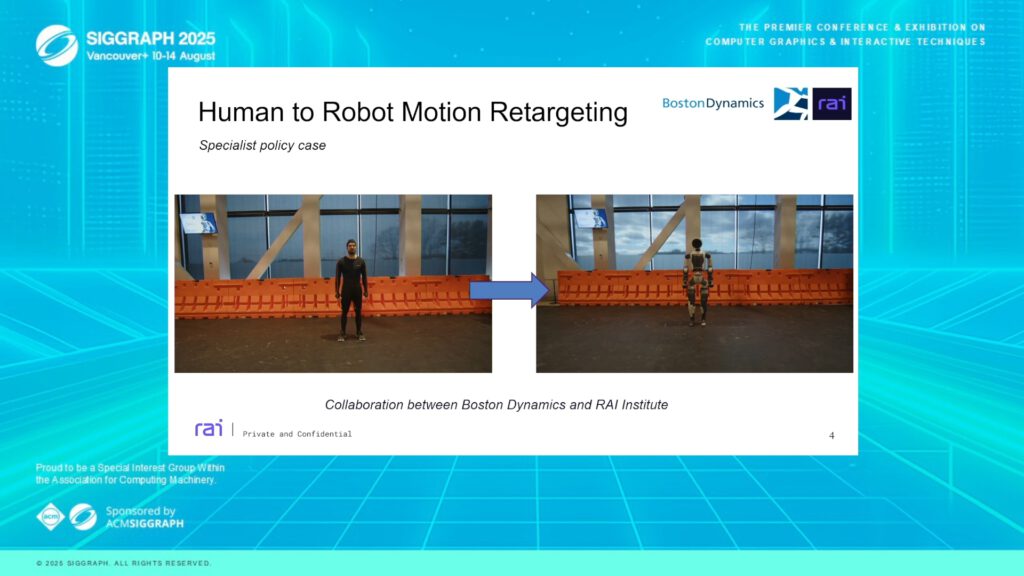
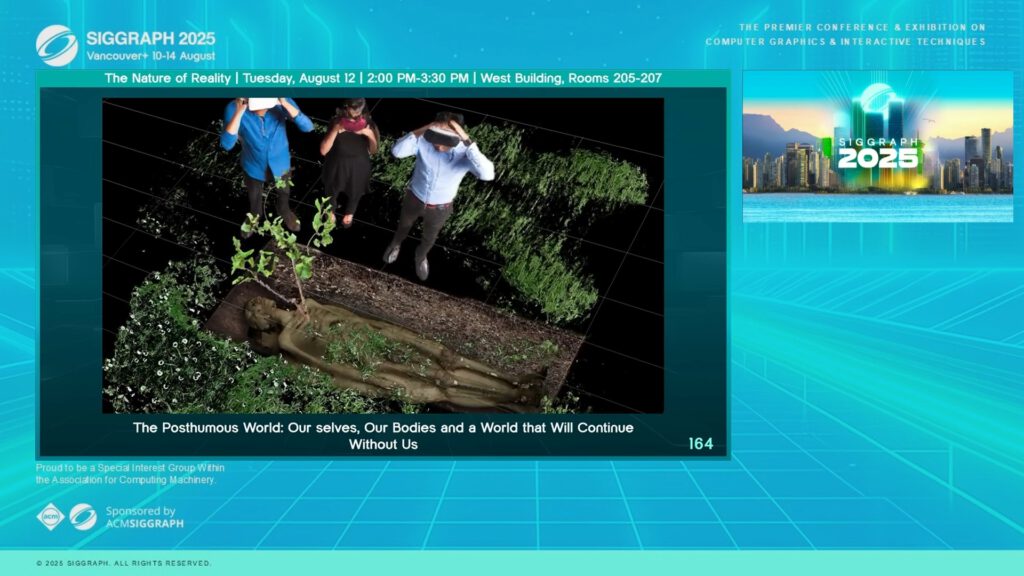
SIGGRAPH 2025 reflected both the promises and the tensions of an industry transformed by AI. The event highlighted how automation and generative tools are streamlining production pipelines and expanding creative possibilities, while also sparking critical reflection on the future role of human artistry. As the conference made clear, the path forward lies not in replacing creativity with computation, but in fostering collaboration between human imagination and machine intelligence.

